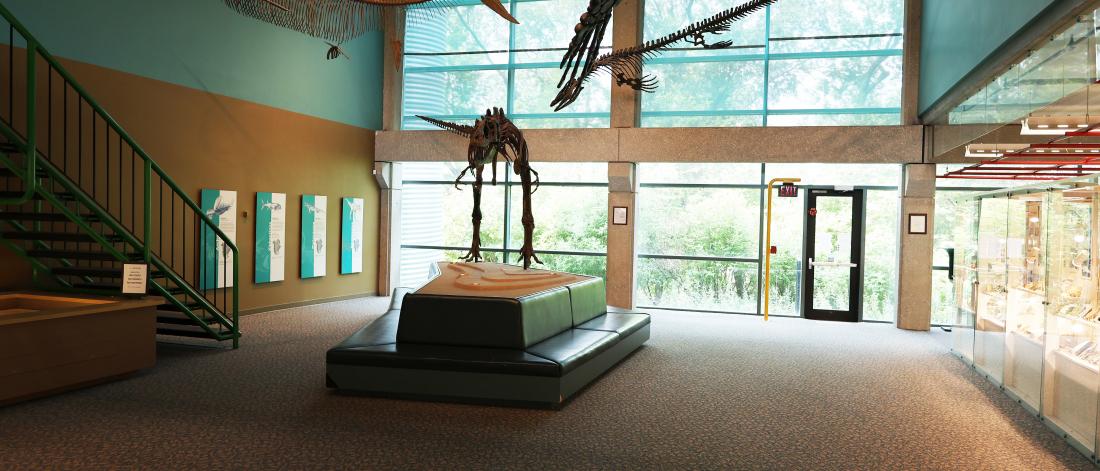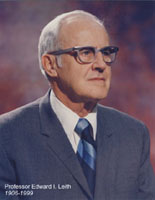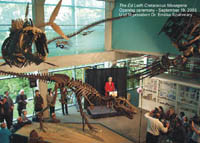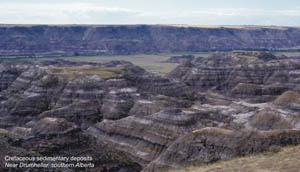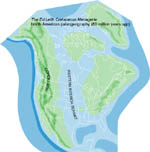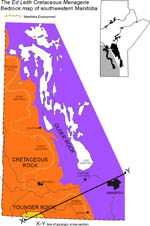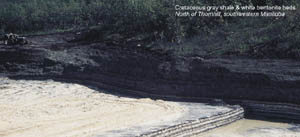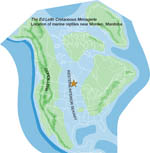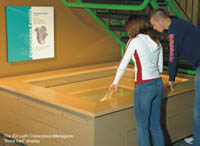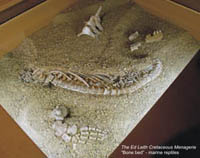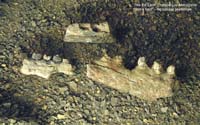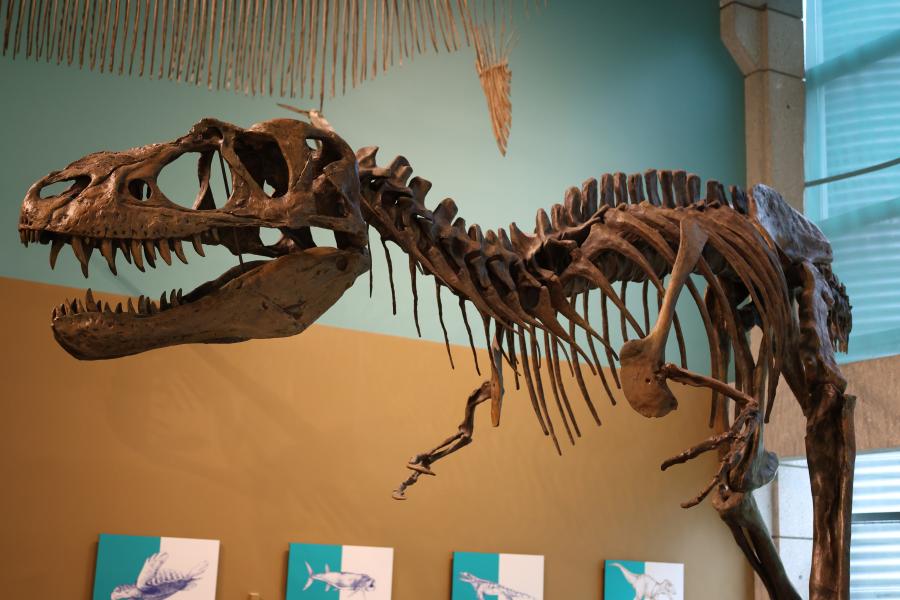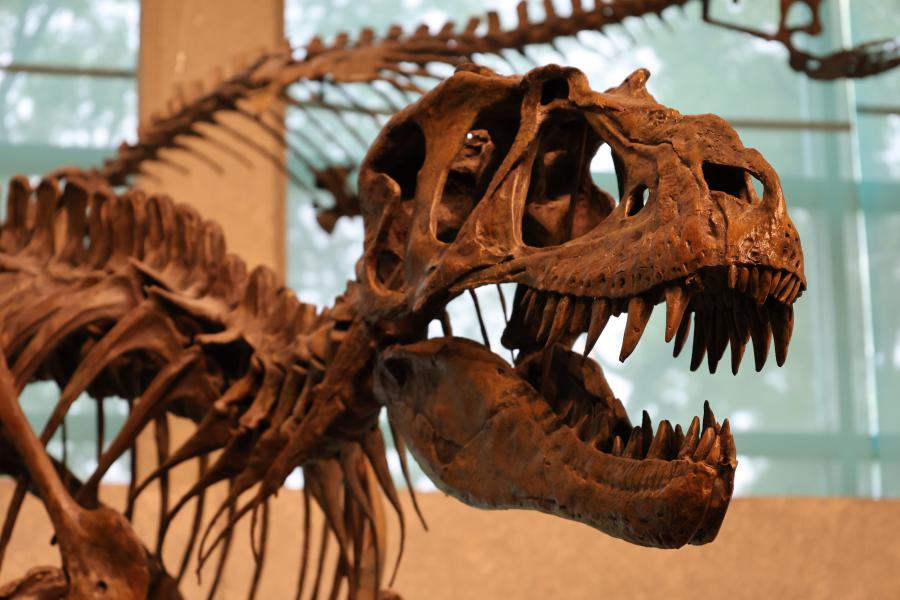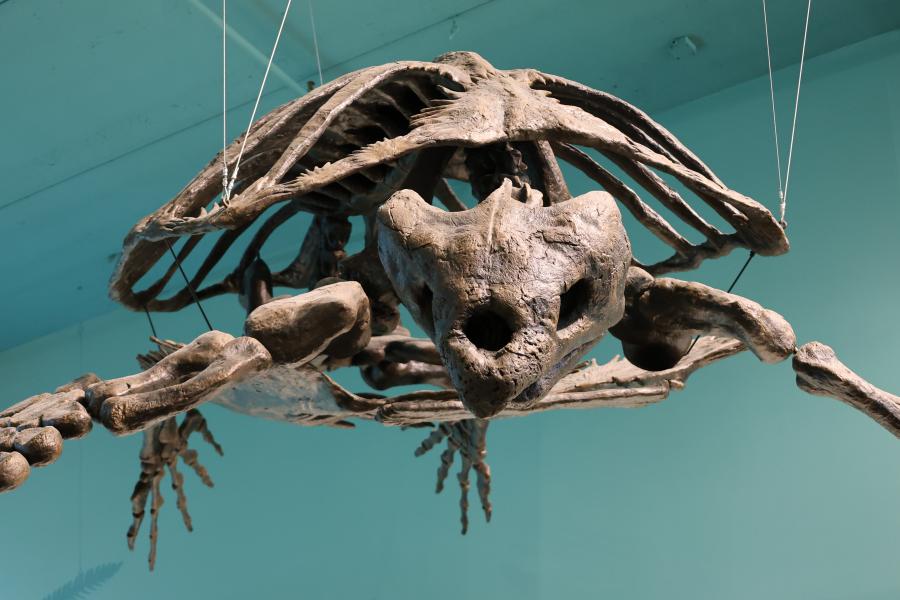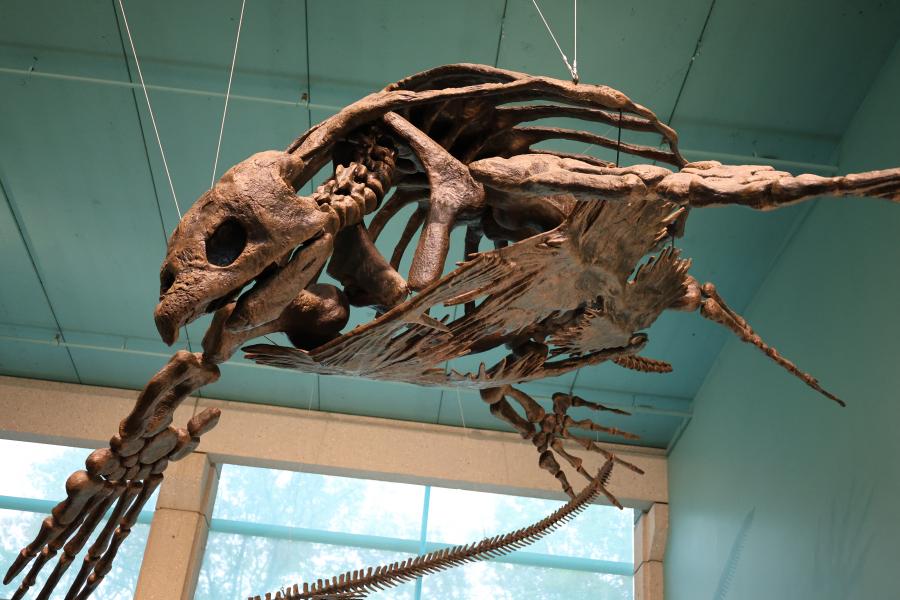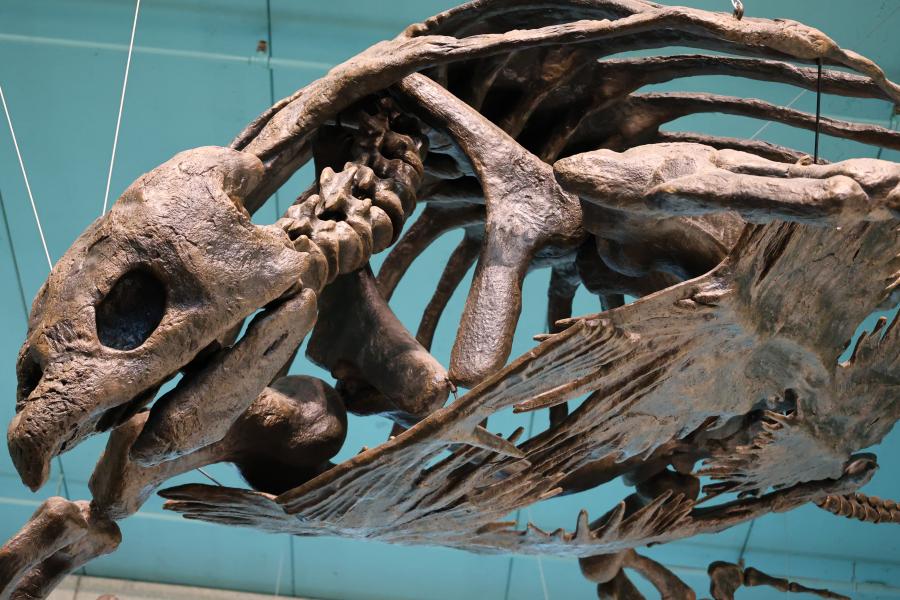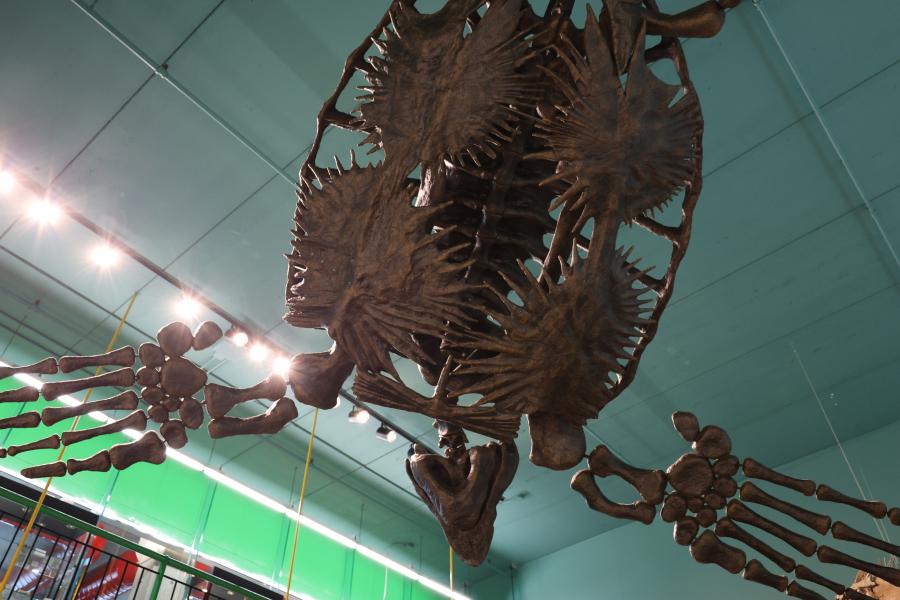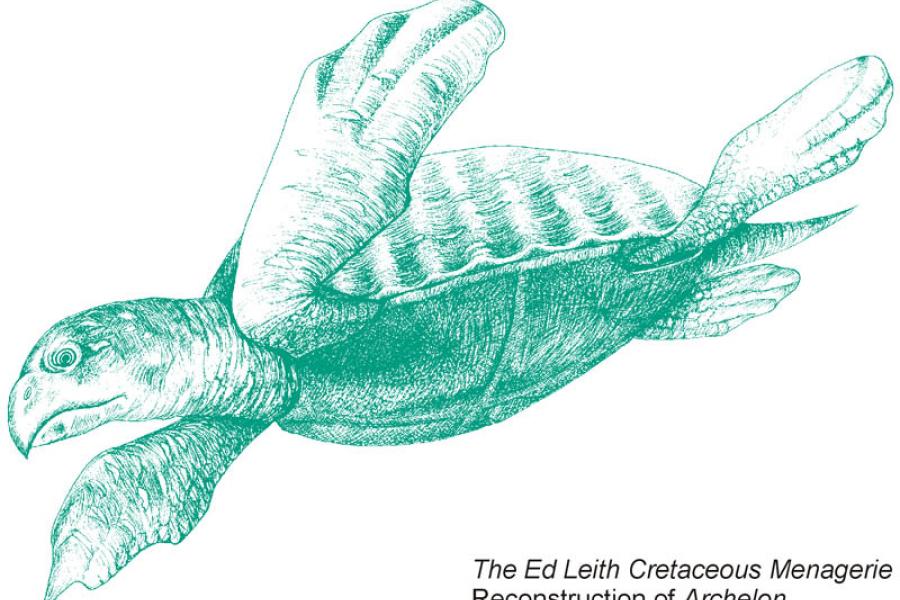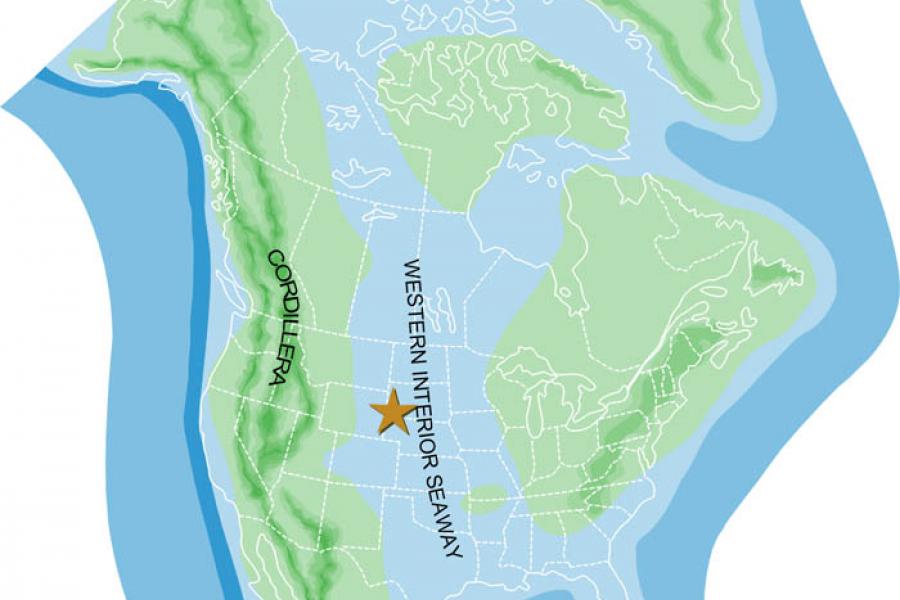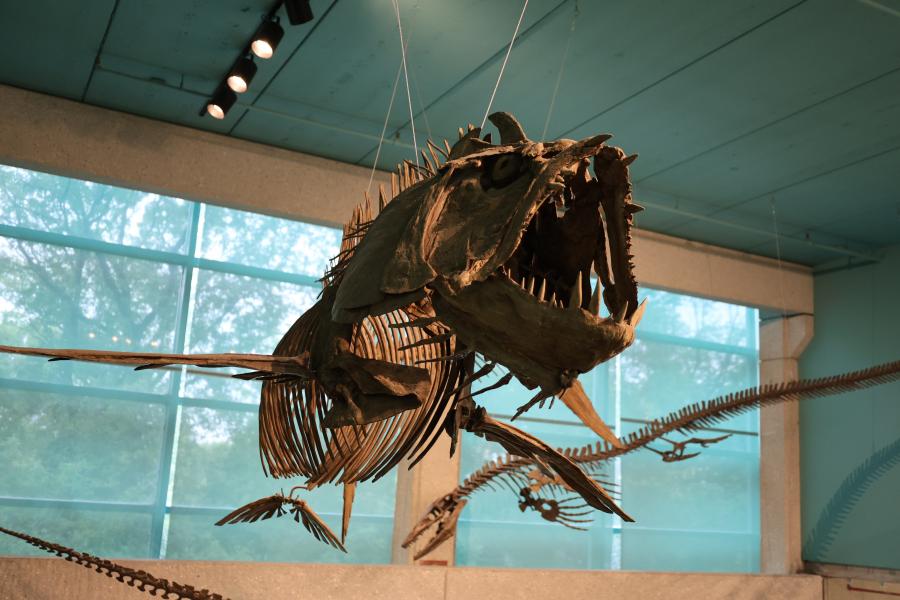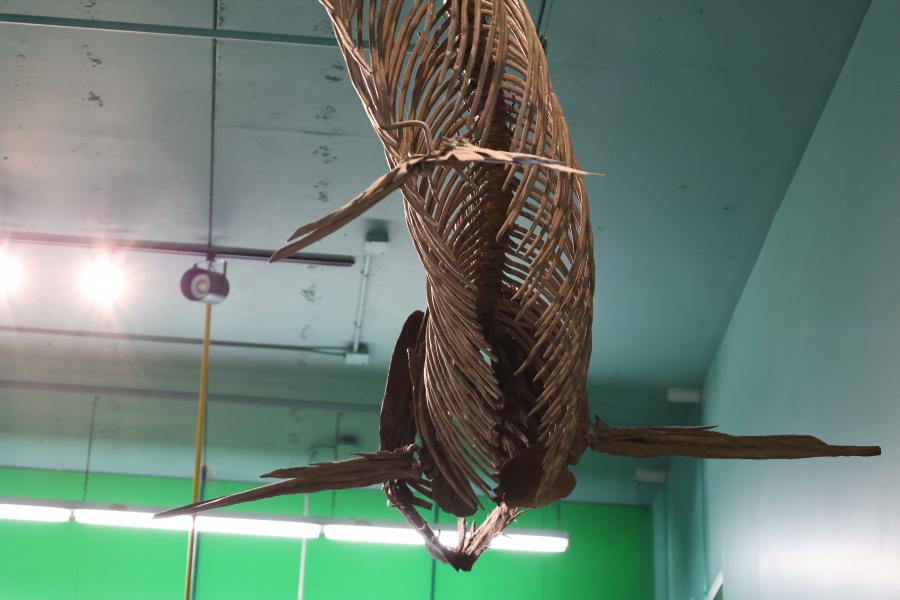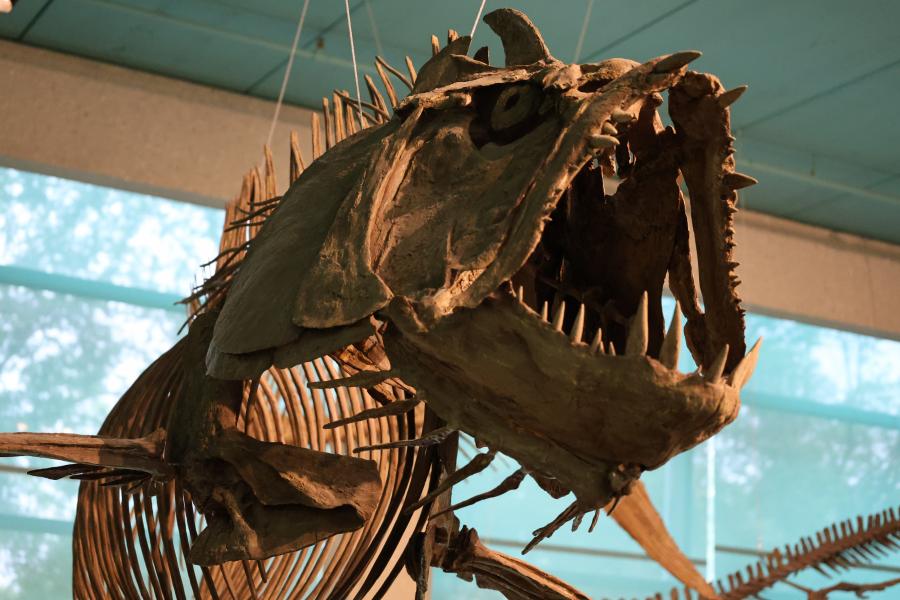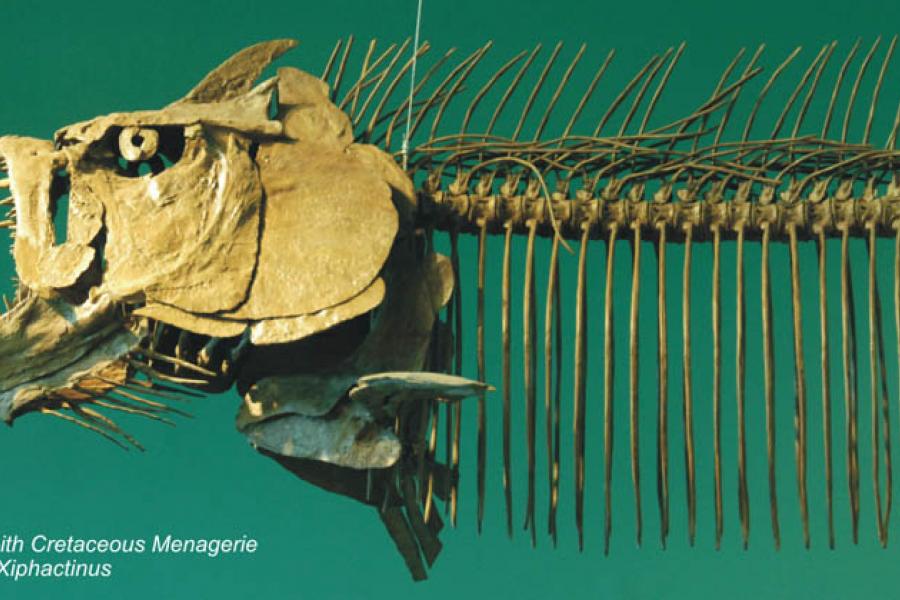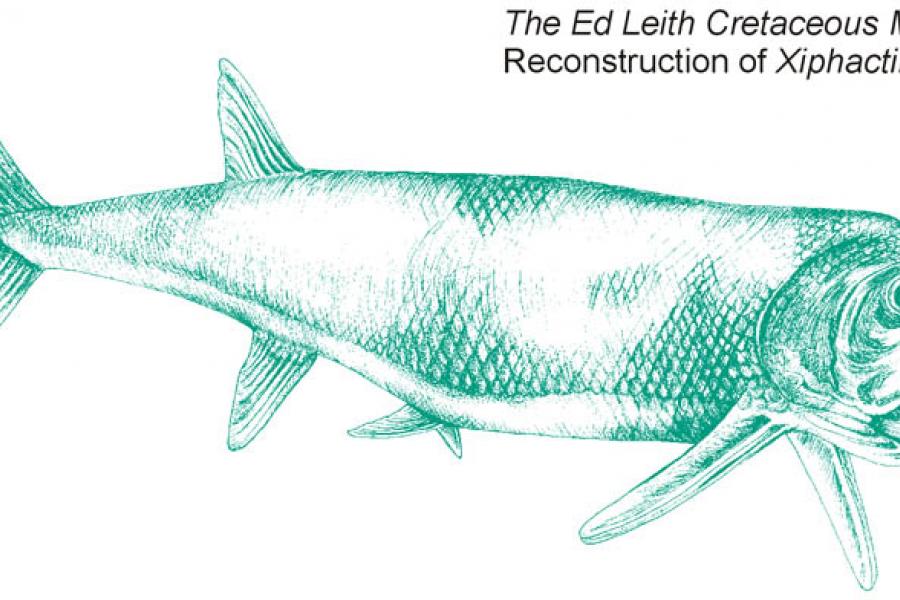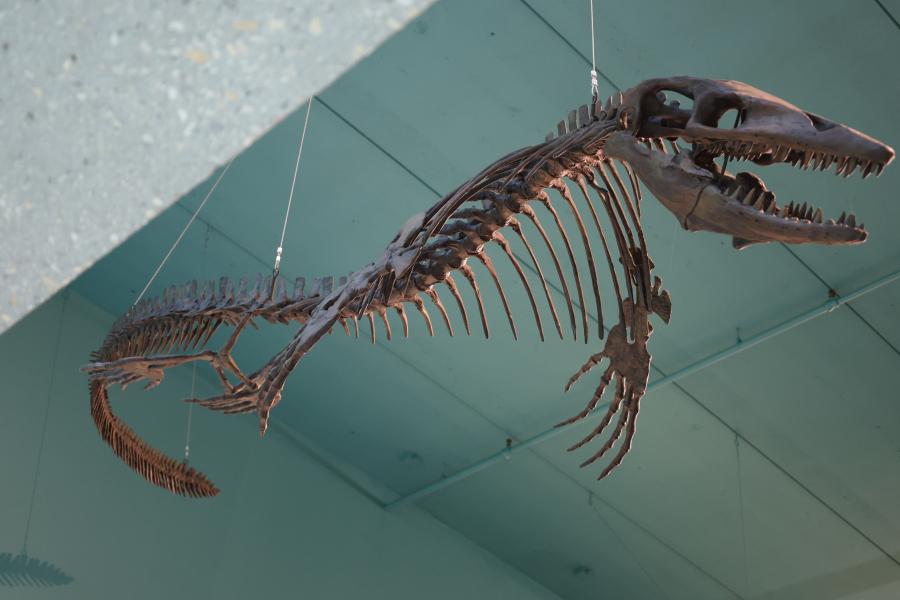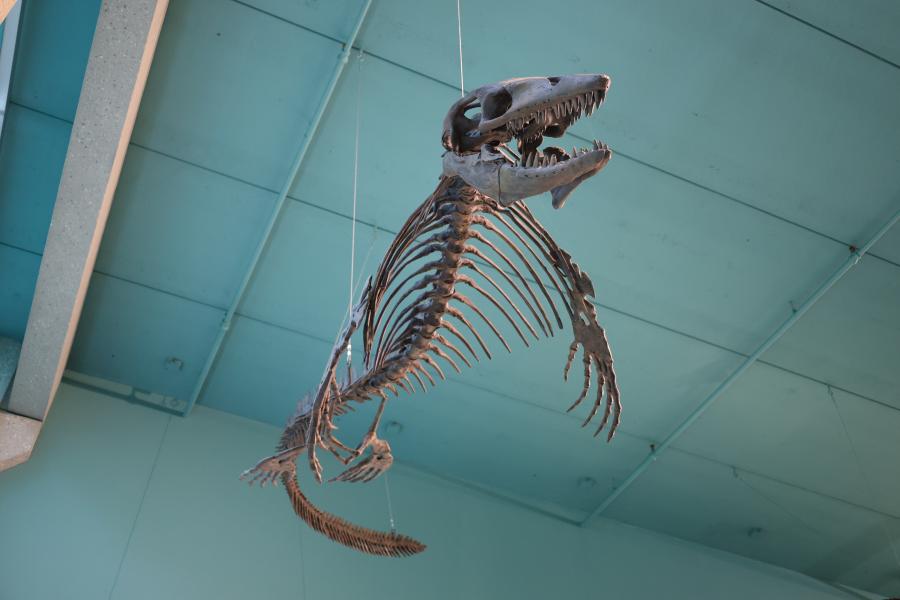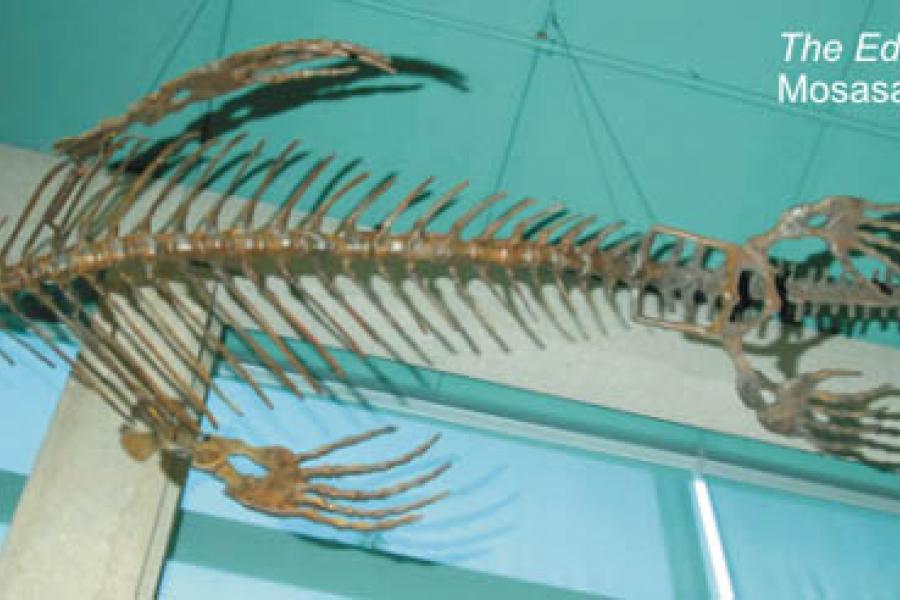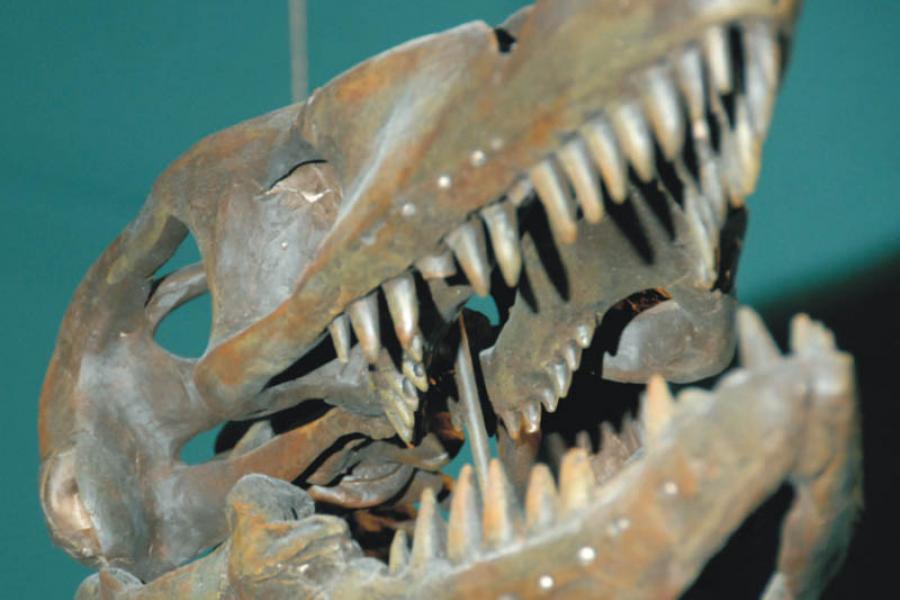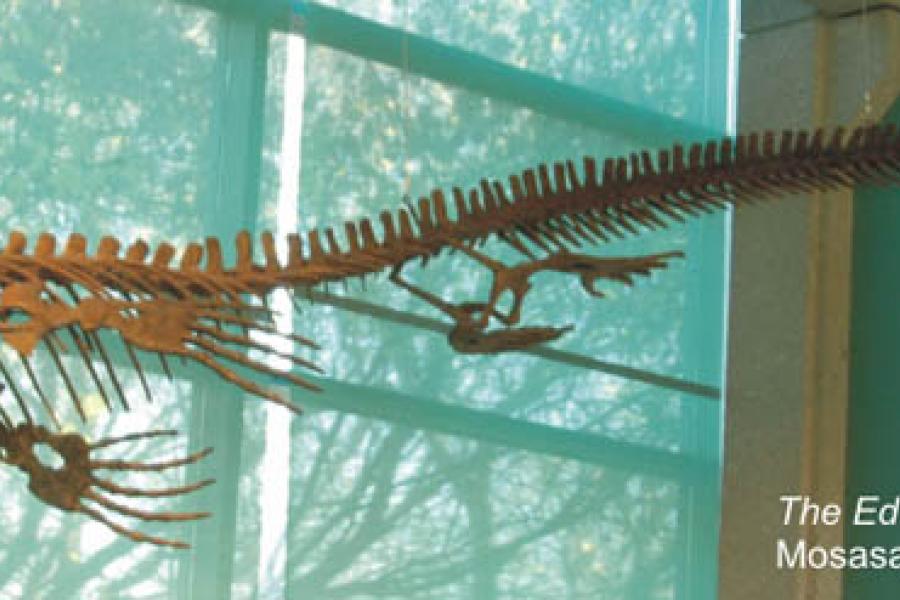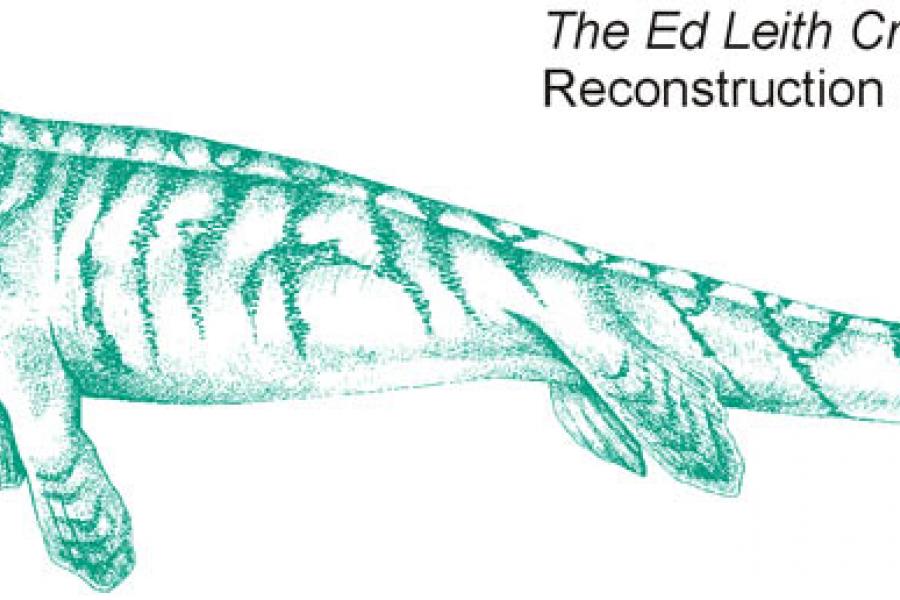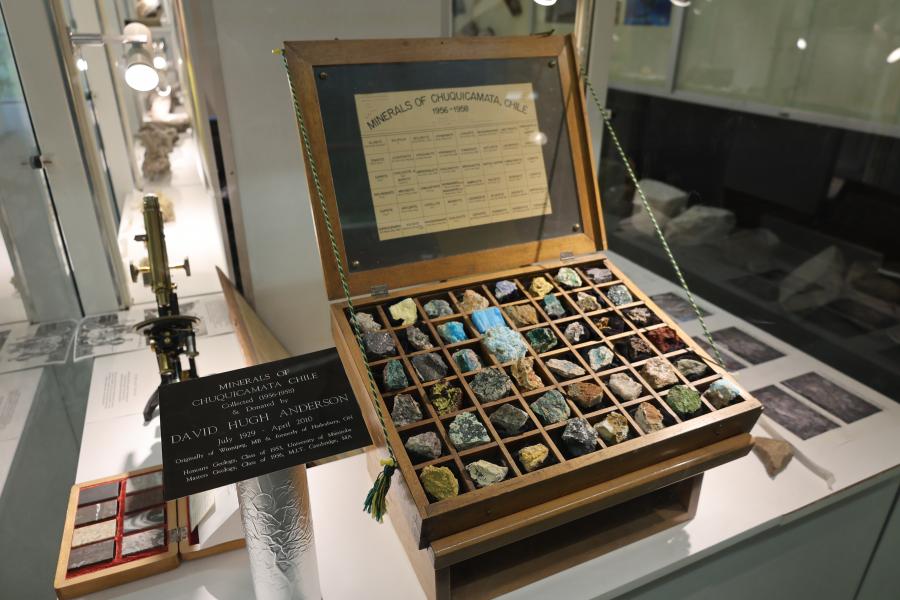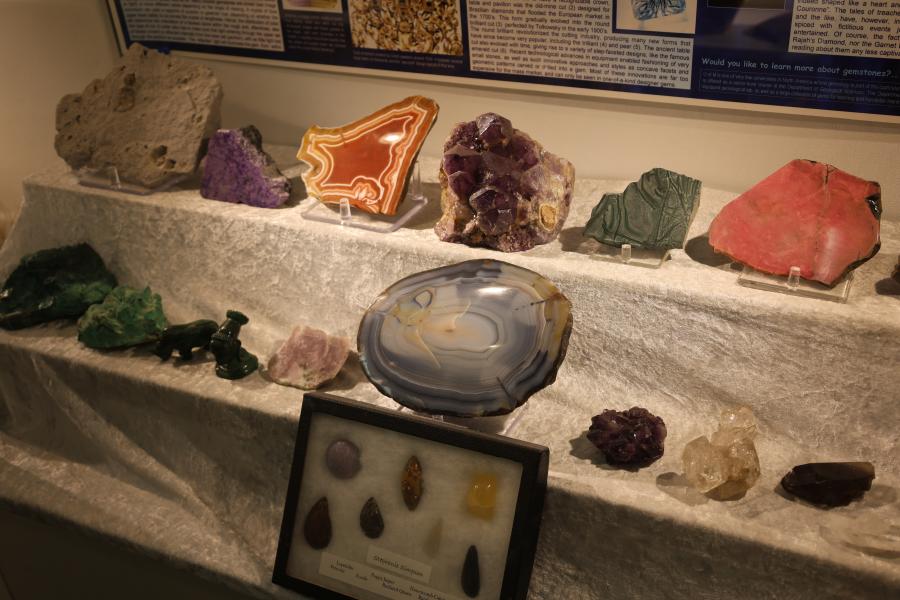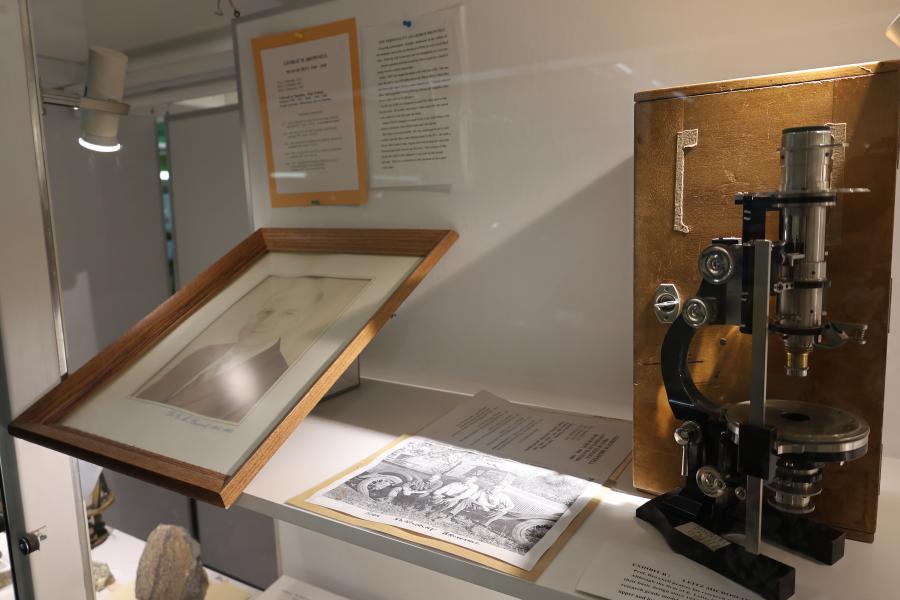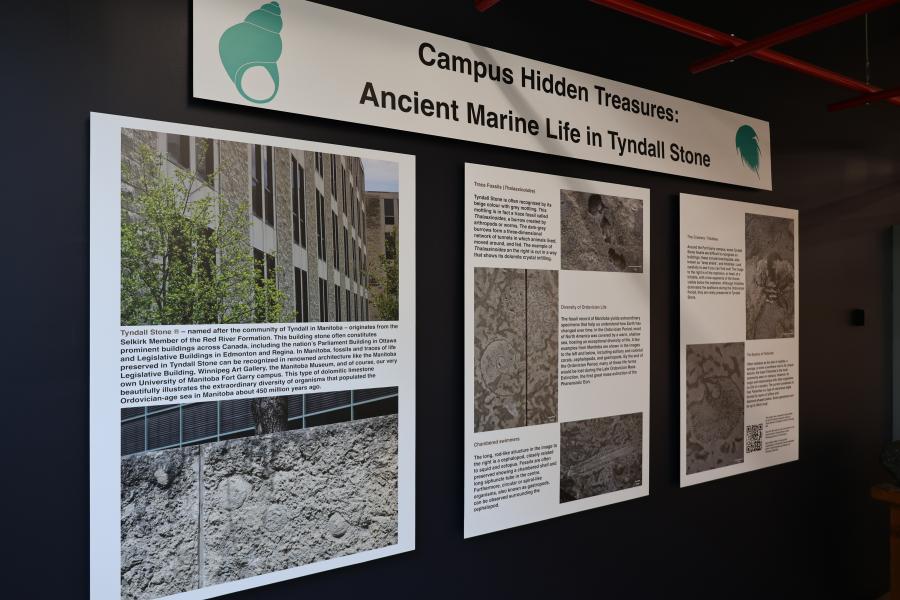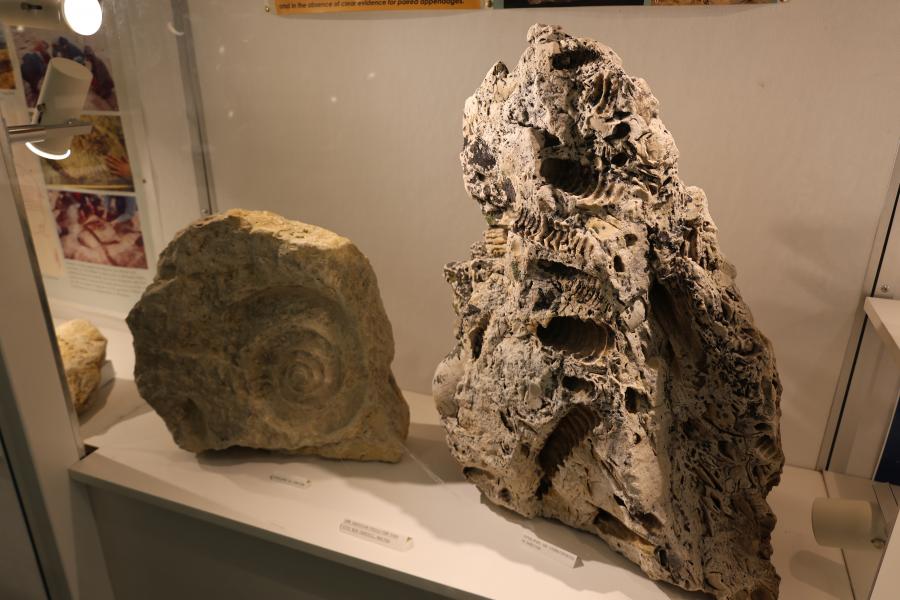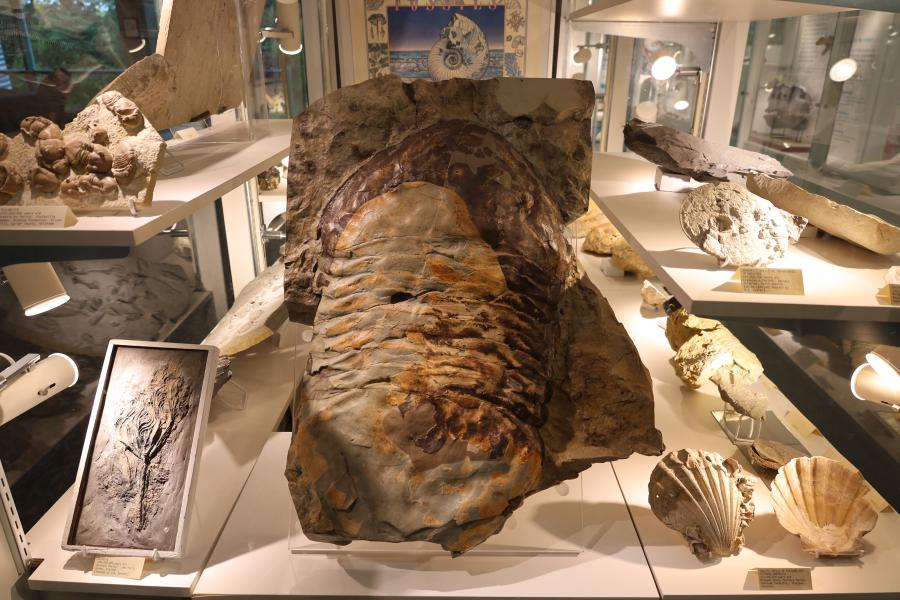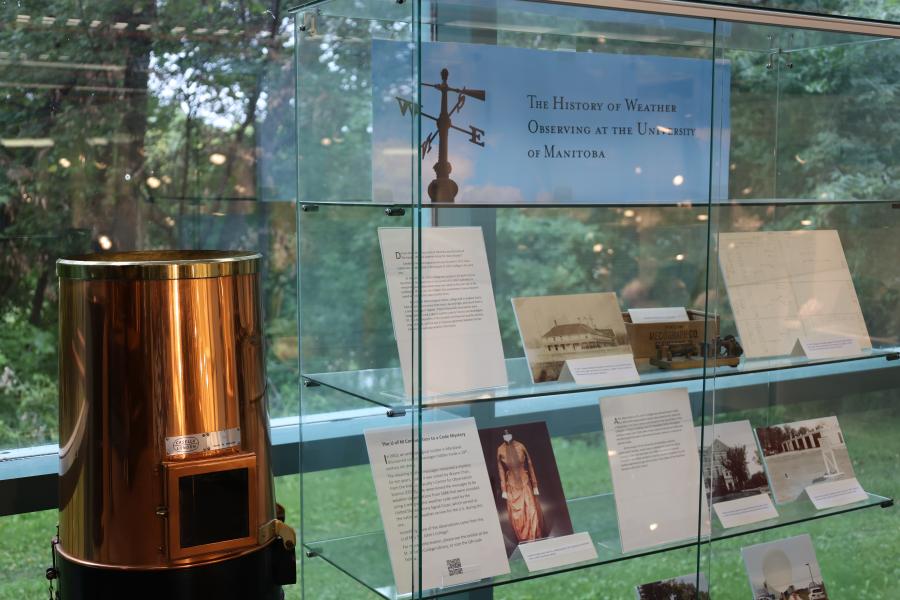Professor Edward I. Leith
1906-1999
Ed Leith is remembered for his life-long love of teaching geology, and particularly for his dedication to introducing the wonders of paleontology, Earth history, and Earth processes to school children. Outreach was a mission close to his heart, and represents a legacy that the University of Manitoba, the Department of Geological Sciences, and Ed’s colleagues, alumni, friends, and family wish to perpetuate through The Ed Leith Cretaceous Menagerie.
Ed Leith was a member of the faculty of the Department of Geological Sciences from 1935 to 1971. He was appointed Professor Emeritus in 1972 and continued to be involved in departmental affairs until the year of his death.
The Ed Leith Cretaceous Menagerie was formally dedicated in a ceremony on the 19th of September 2003.
Ed Leith made many contributions throughout his career at the University of Manitoba, and received special recognition for his dedication to teaching and outreach. On a personal level, many of us remember his contagious life-long love of geology. This fascination and enthusiasm took the form of trips to schools where he introduced the wonders of paleontology, Earth history, and Earth processes to eager and inquiring young minds. His stories of meeting with school children conveyed his enormous delight in sharing his love of fossils. He took pride in the letters that he received from these young pupils, and kept them in a special file.
Ed Leith was an alumnus of the University of Manitoba, having graduated with a BSc in 1928 and an MSc in 1929. In 1935, he became a member of the University of Manitoba faculty, after postgraduate studies at Yale University. He retired in 1971, was appointed Professor Emeritus in 1972, and remained involved in departmental affairs until shortly before his death.

